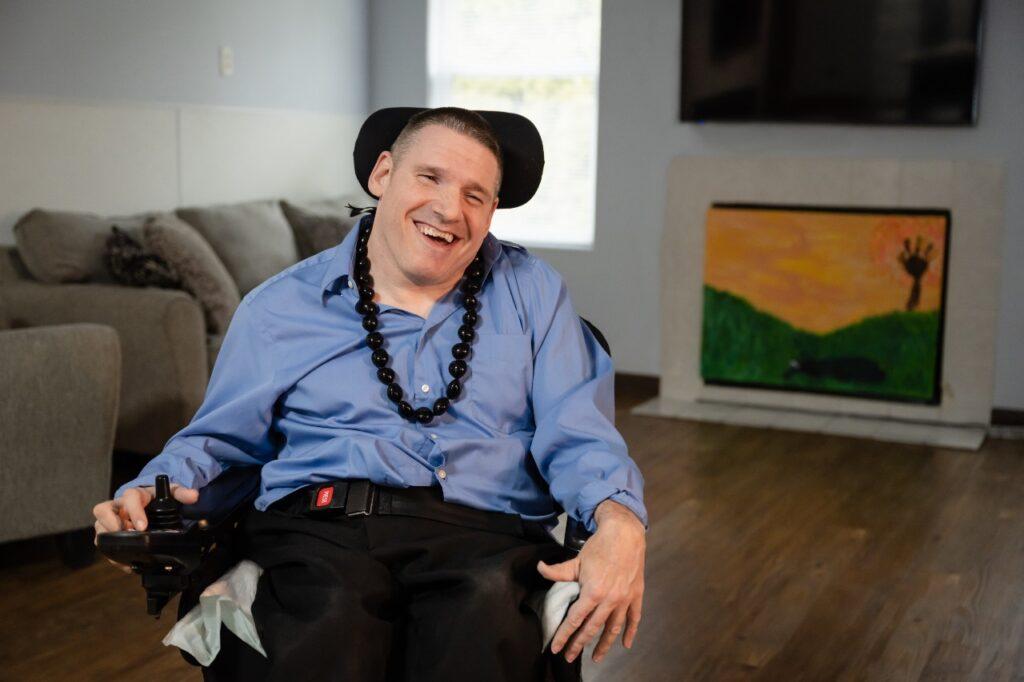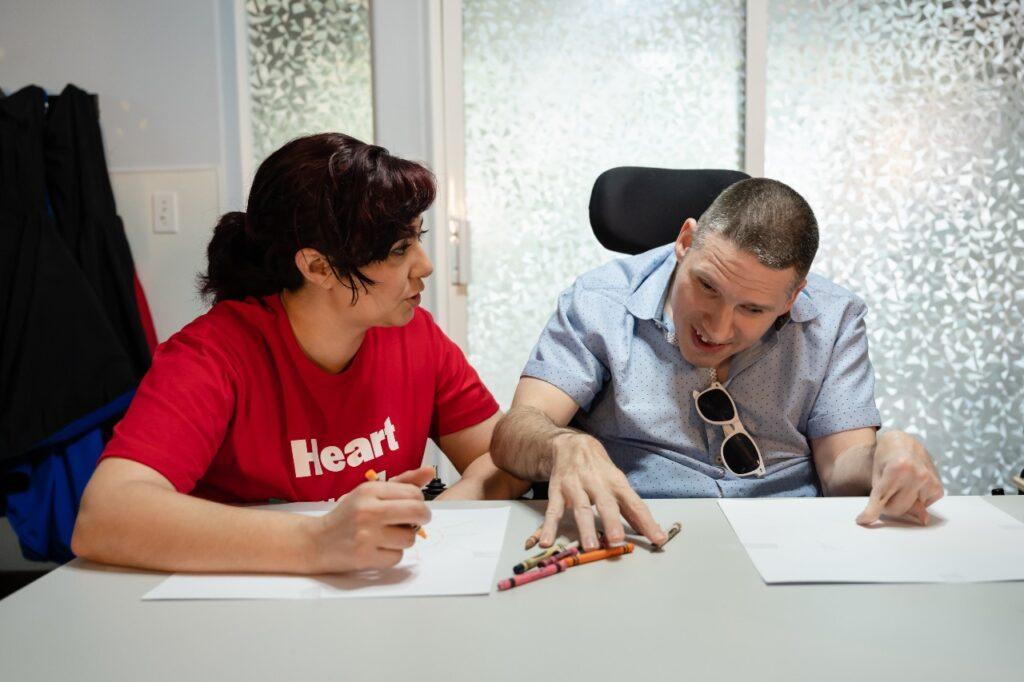Read more about the services ALSO offers to people with intellectual and developmental disabilities.
Read more about the services ALSO offers to people with intellectual and developmental disabilities.

Can you save money while on disability? If you receive Social Security Disability Insurance (SSDI) or Supplemental Security Income (SSI), federal rules dictate that you can’t have resources (including savings accounts) that are worth more than $2,000 for a person or $3,000 for a married couple living together. So the answer to the savings question would seem to be “no,” and it was—until December 2014 and the passage of the “Achieving a Better Life Experience Act,” which allows eligible Americans with disabilities the opportunity to save as much as $17,000 a year (and in some cases, more).
Many people with disabilities receive some sort of state or federal benefits, like Social Security, Medicaid, or food or housing assistance. Unfortunately, these benefits come with income and asset caps. In other words, people have to choose between saving (or making) money or keeping necessary benefits. The Achieving a Better Life Experience (ABLE) act resolves this issue: Eligible people with disabilities now have the option to save or invest money in a tax-free account without fearing the loss of benefits. They can save up to purchase a service dog, apply for a well-paying job without worrying about losing benefits, or even buy a new house.
“Having a disability is expensive,” says Kaellen Hessel-Owens, the Oregon State Treasury’s Oregon ABLE Outreach Manager. “Research from the National Disability Institute shows that households with one adult who has a disability need 28% more income on average to obtain the same standard of living as a similar household without a member who has a disability. Oregon ABLE can help make up for some of that gap.”
Besides being tax-free, Oregon ABLE’s Cash Option’s current interest rate is higher than most other rates available, and Oregon ABLE account holders qualify for a refundable income tax credit.
“ABLE accounts seem to be the only way to combat the encouraged impoverishment that is set by asset limits,” says Annie Steiner, Financial Advocacy Specialist at ALSO. “ABLE accounts are the Noah’s ark of savings for people with disabilities.”
If you have a significant disability with an onset before age 26 and are already receiving SSI and/or SSDI benefits, you’re automatically eligible to open an ABLE account.
But it’s not just people receiving Social Security who can benefit from ABLE accounts. If you acquired a disability before age 26 and meet Social Security’s definition and criteria regarding significant functional limitations, you can file a disability certification. This certification, which includes information about your disability and must be signed by a physician, certifies that you:
Note that you can be over 26 years old when you open an ABLE account, you just need to have acquired your disability before that age.
That age limit is increasing soon. The ABLE Adjustment Act was signed into law on December 24, 2022, and will increase the age of ABLE eligibility from “before age 26” to “before age 46” effective January 1, 2026. It’s estimated that the new bump in eligibility will allow an additional six million people, including one million veterans, to be able to save in ABLE accounts.

Opening an ABLE account is simple. If you are supported by ALSO, Jeanette Nielsen (Jeanette.Nielsen@alsoweb.org ) would be happy to help you.
If you’re not supported by ALSO or would like to set up an Oregon ABLE account on your own, go to Oregon ABLE Savings Plan (or call them at at 1-844-999-2253). You’ll provide limited information about you or your beneficiary (to determine ABLE eligibility), decide how you’ll fund your account, and choose either a cash or investment option. ABLE accounts in Oregon allow you to save your money in an FDIC-insured savings account or invest it in one of three types of financial portfolios: ABLE Conservative, ABLE Moderate, or ABLE Aggressive. Each investment option contains a different ratio of stocks and bonds within a portfolio of mutual funds. There’s a $25 minimum deposit to open your Oregon ABLE account.
“The account can be managed online,” says Mrs. Hessel-Owens, “so it’s easy to access, contribute, withdraw, or load money to a prepaid card. The Oregon ABLE Savings Plan also offers free monthly webinars that explain Oregon ABLE account plans in detail.”
If you don’t live in Oregon, you can access a similar plan, ABLE for All (powered by the state of Oregon) or check out other options and compare plans at The ABLE National Resource Center (managed by the National Disability Institute). A tip from Mrs. Hessel-Owens: “If someone searches for ABLE accounts online, the top result is usually an ad, and it will not necessarily be for their own state’s program” (which could be important for state tax credit eligibility).
“Absolutely”, says Ms. Steiner, who was so impressed with the benefits of ABLE accounts that she opened over twenty ABLE accounts for people supported by ALSO within her first month and a half.
It’s also important for families of children with disabilities to recognize the advantages of opening an ABLE account. “Often, families don’t realize that when their child turns 18, they may begin qualifying for benefits that they weren’t eligible for previously, “ says Mrs. Hessel-Owens. “Saving in an Oregon ABLE account while the child is young allows them to be better prepared for that transition to adulthood.”
“It’s a way to build a future” agree Ms. Steiner. “To be able to participate in your life and the kind of life that you desire while still receiving instrumental government benefits. It’s a way to have a robust and fulfilling life regardless of ability.”
That’s what ALSO is all about, supporting people with disabilities so that they can have they life they want. To learn more about all the ways ALSO can assist you or your family member, contact us today!

Sign up for our newsletter to get our latest news, content, and job opportunities.
Help us ensure that everyone has the same opportunities in their home, workplace and community. Let’s make dreams!
